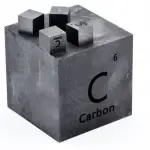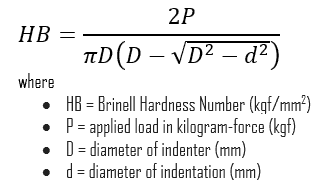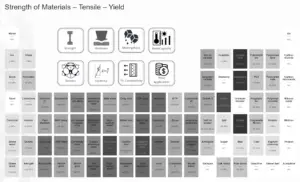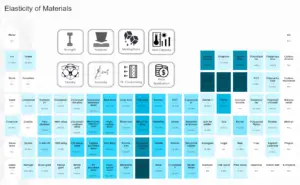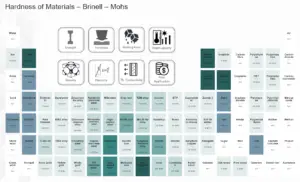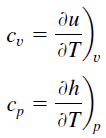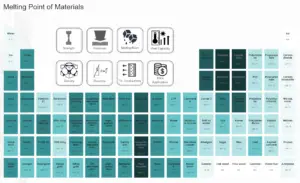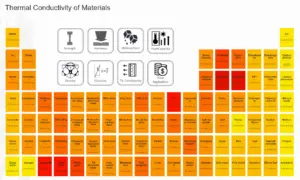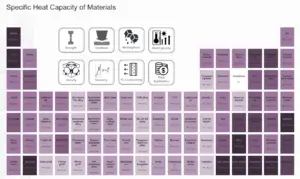About Graphite
Graphite is a crystalline form of the element carbon with its atoms arranged in a hexagonal structure. Its uncommon combination of properties is due to graphite’s crystalline structure. The carbon atoms are set hexagonally in a planar condensed ring system. The layers are stacked parallel to each other. The atoms within the rings are bonded covalently, while the layers are loosely linked together by van der Waals forces. It occurs naturally in this form and is the most stable form of carbon under standard conditions. Although graphite is flexible, it is not elastic and has high electrical and thermal conductivity. It is also chemically inert and highly refractory. Since graphite displays low adsorption of X-rays and neutrons, it is very valuable in nuclear applications.
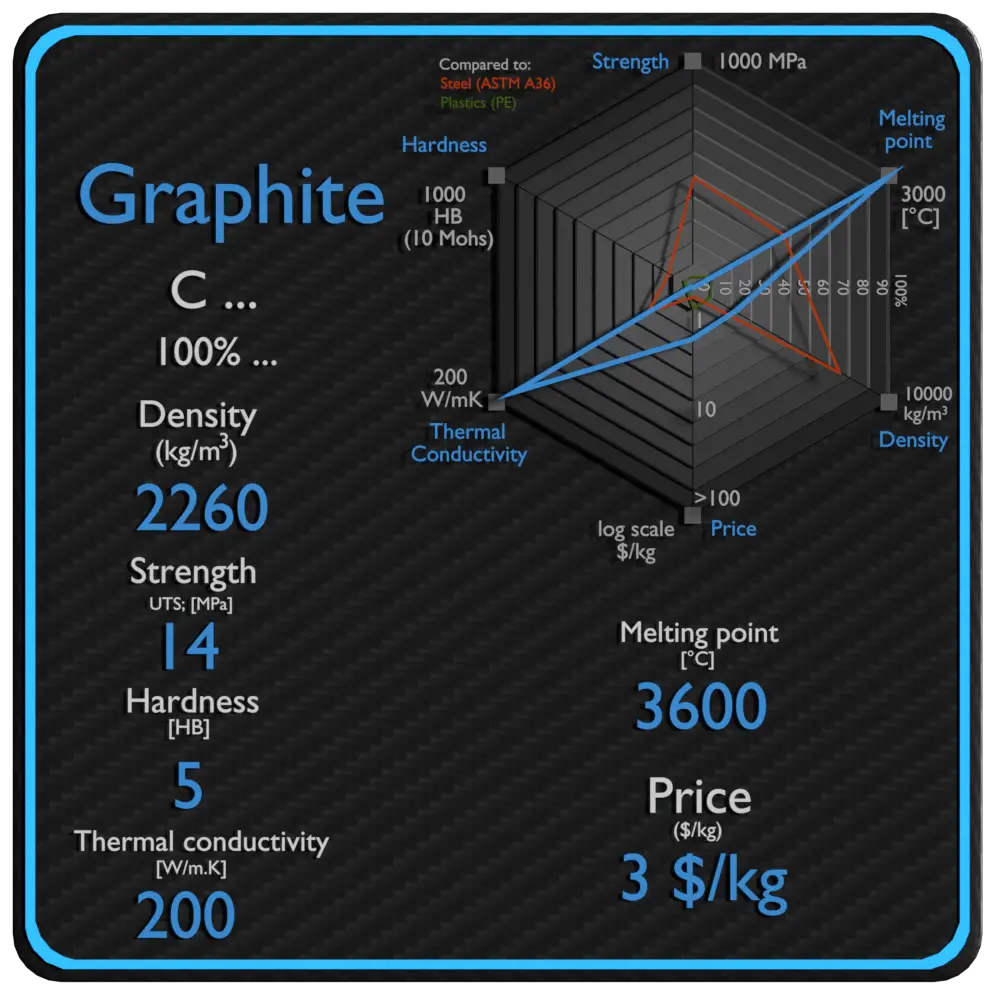
Summary
| Name | Graphite |
| Phase at STP | solid |
| Density | 2260 kg/m3 |
| Ultimate Tensile Strength | 14 MPa |
| Yield Strength | N/A |
| Young’s Modulus of Elasticity | 11.5 GPa |
| Brinell Hardness | 5 BHN |
| Melting Point | 3600 °C |
| Thermal Conductivity | 200 W/mK |
| Heat Capacity | 720 J/g K |
| Price | 3 $/kg |
Composition of Graphite
Its uncommon combination of properties is due to graphite’s crystalline structure. The carbon atoms are set hexagonally in a planar condensed ring system. The layers are stacked parallel to each other. The atoms within the rings are bonded covalently, while the layers are loosely linked together by van der Waals forces. It occurs naturally in this form and is the most stable form of carbon under standard conditions.
Applications of Graphite
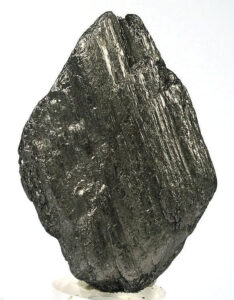
Graphite properties determine the variety of the areas of its applications in industry, transport, energetics, defence, medicine, science, sport. On account of its high-temperature stability and chemical inertness, graphite is the perfect candidate for refractory material. According to the USGS, US natural graphite consumption in refractories comprised 12,500 tonnes in 2010. Carbon brushes for electrical motors are manufactured from high purity synthetic graphite. High-purity graphite is also used in nuclear reactors as an neutron moderator. This is due to its very low absorption cross-section. Natural graphite in steelmaking mostly goes into raising the carbon content in molten steel.
Mechanical Properties of Graphite
Strength of Graphite
In mechanics of materials, the strength of a material is its ability to withstand an applied load without failure or plastic deformation. Strength of materials basically considers the relationship between the external loads applied to a material and the resulting deformation or change in material dimensions. In designing structures and machines, it is important to consider these factors, in order that the material selected will have adequate strength to resist applied loads or forces and retain its original shape.
Strength of a material is its ability to withstand this applied load without failure or plastic deformation. For tensile stress, the capacity of a material or structure to withstand loads tending to elongate is known as ultimate tensile strength (UTS). Yield strength or yield stress is the material property defined as the stress at which a material begins to deform plastically whereas yield point is the point where nonlinear (elastic + plastic) deformation begins. In case of tensional stress of a uniform bar (stress-strain curve), the Hooke’s law describes behaviour of a bar in the elastic region. The Young’s modulus of elasticity is the elastic modulus for tensile and compressive stress in the linear elasticity regime of a uniaxial deformation and is usually assessed by tensile tests.
See also: Strength of Materials
Ultimate Tensile Strength of Graphite
Ultimate tensile strength of Graphite is 14 MPa.
Yield Strength of Graphite
Yield strength of Graphite is N/A.
Modulus of Elasticity of Graphite
The Young’s modulus of elasticity of Graphite is 11.5 MPa.
Hardness of Graphite
In materials science, hardness is the ability to withstand surface indentation (localized plastic deformation) and scratching. Brinell hardness test is one of indentation hardness tests, that has been developed for hardness testing. In Brinell tests, a hard, spherical indenter is forced under a specific load into the surface of the metal to be tested.
The Brinell hardness number (HB) is the load divided by the surface area of the indentation. The diameter of the impression is measured with a microscope with a superimposed scale. The Brinell hardness number is computed from the equation:
Brinell hardness of Graphite is approximately 5 BHN (converted).
See also: Hardness of Materials
Thermal Properties of Graphite
Graphite – Melting Point
Melting point of Graphite is 3600 °C.
Note that, these points are associated with the standard atmospheric pressure. In general, melting is a phase change of a substance from the solid to the liquid phase. The melting point of a substance is the temperature at which this phase change occurs. The melting point also defines a condition in which the solid and liquid can exist in equilibrium. For various chemical compounds and alloys, it is difficult to define the melting point, since they are usually a mixture of various chemical elements.
Graphite – Thermal Conductivity
Thermal conductivity of Graphite is 200 W/(m·K).
The heat transfer characteristics of a solid material are measured by a property called the thermal conductivity, k (or λ), measured in W/m.K. It is a measure of a substance’s ability to transfer heat through a material by conduction. Note that Fourier’s law applies for all matter, regardless of its state (solid, liquid, or gas), therefore, it is also defined for liquids and gases.
The thermal conductivity of most liquids and solids varies with temperature. For vapors, it also depends upon pressure. In general:
Most materials are very nearly homogeneous, therefore we can usually write k = k (T). Similar definitions are associated with thermal conductivities in the y- and z-directions (ky, kz), but for an isotropic material the thermal conductivity is independent of the direction of transfer, kx = ky = kz = k.
Graphite – Specific Heat
Specific heat of Graphite is 720 J/g K.
Specific heat, or specific heat capacity, is a property related to internal energy that is very important in thermodynamics. The intensive properties cv and cp are defined for pure, simple compressible substances as partial derivatives of the internal energy u(T, v) and enthalpy h(T, p), respectively:
where the subscripts v and p denote the variables held fixed during differentiation. The properties cv and cp are referred to as specific heats (or heat capacities) because under certain special conditions they relate the temperature change of a system to the amount of energy added by heat transfer. Their SI units are J/kg K or J/mol K.
Properties and prices of other materials
material-table-in-8k-resolution
